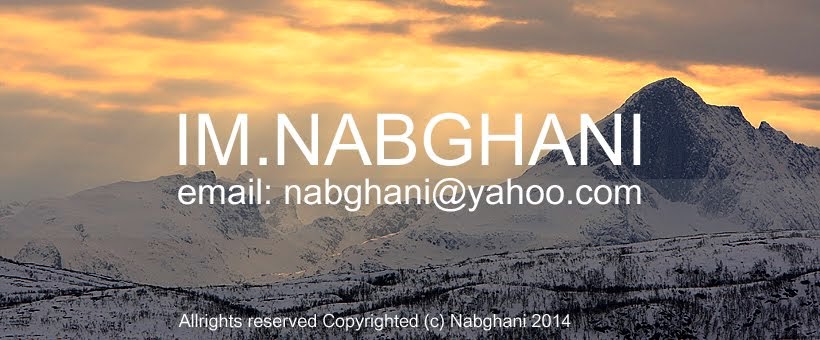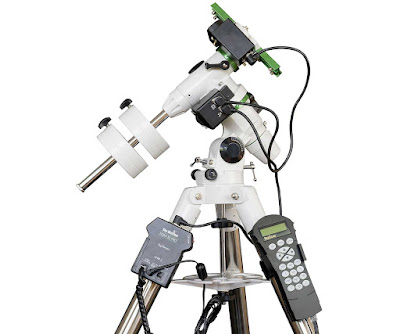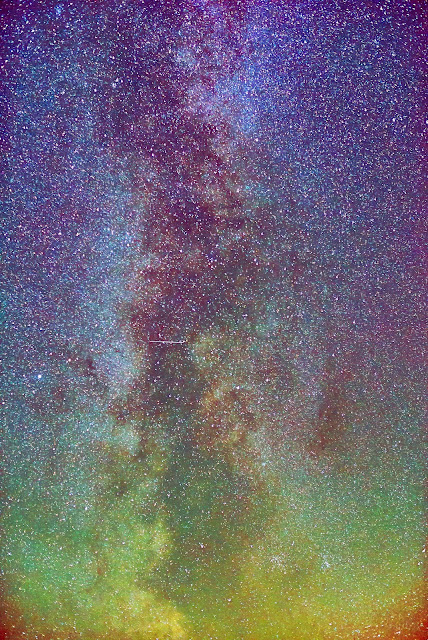I have had the Skywatcher Star Adventurer for almost three years now, bought it possibly at the same time I bought my Sony A7S. It took a while to actually take it out and use it in the field. It was used for the first time finally for shooting Milkyway in Sulaskard and Maudal, and I was very happy with the results.
This year I'm using it quite a bit more than past years. With several clear sky nights this winter I managed to get more familiar with aligning the Adventurer to the Polaris. Because Milkyway is not yet quite optimum for shooting this time of year I have been targetting other bright objects in the sky.
In winter over in the Northern hemisphere, winter time means the most obvious targets are Orion, Gemini, Leo, Auriga and several other constellations. In Orion you have the Orion sword where the most obvious is the Orion's nebula. In Leo and Auriga you have the stars Regulus and Capella.
Stack shots on Sequator then PP.
Single shots.
Armed with the Sony A7S and Canon 6D, I shot different parts of the night sky with a range of lenses from 50mm to 400mm. Partly to test the limits of the Adventurer and partly to see what I can get from widefield photography using these lenses.
It was quite OK with Regulus and Capella all the way up to Sigma Art 135mm, shooting at a max of 30secs tracking on the Adventurer. Decent shots without any star trailing were bagged. Not so successful with the Tamron 200/3,5 Macro ... yes, it's a flatfield but it wasn't getting infinity focus. Samyang 85 did well too. I also tried EF 400/5,6. Zero trailing all the way to 20 seconds was possible though I have not yet pushed it all the way to 30 secs. Andromeda still escapes me, it has so far been hiding behind some neighbour's houseroof.
Auriga with the bright Capella, 135/1.8 pointed straight up.
The biggest drawback from shooting from home aside from lack of motivation and clear sky in my humble opinion is light pollution. Shooting Orion from within the city limits you'd expect some of it if not a lot of it. Matters were made worst by the fact that by nightfall Orion hovers exactly above the bright lights from where I was shooting, there's no escaping this atrocity as the shots above can testify.
From this, I gathered several important lessons :
1. There's light pollution everywhere.
2. Adventurer can carry lenses up to Canon EF400/5.6 and even the bulky Sigma Art 135/1.8.
3. Good Polaris alignment gets crucial as you switch to longer focal lengths.
4. Exposure (bright pointy light objects surrounded by a black background) seems a very fine balancing act when you shoot multi frames for stacking. PP skills too.
Orion's Nebula with EF400/5,6 after small tweaks on PS and stacked 3 shots on Sequator.
Same region, stacked 60 shots from 6D on Sequator all options on. Shot using Sigma 135/1.8
Zooming in closer with EF400/5,6, stacked 100 shots on Sequator, cropped
To be fair, I have not really put the Adventurer through it's paces. Next few clearsky nights could see the Adventuer being pushed further together with the 400/5,6. Maybe even use the counterweights provided and try shoot with the EF400/4 or Sigma 300/2,8.
Within the same trajectory of trying to better image the nightsky as well as trying to learn more about the many facets of wide field imaging, I recently ordered the Skywatcher EQM35 Skyscan Goto mount. Being of modular design, half of it would enable better tracking with heftier lenses (ie. 70-200/2,8, 400/4,0 and 300/2.8) while the other half should provide a good starting base for a proper telescope.
Though the leap isn't as big as I had originally planned when I started ie. imaging with a dream Stellarvue telescope with obviously many more holes of knowledge to be filled in, I think I've made some progress at least. Considering the more or less only 5 months dark nights, with only 7 nights of which is suitable for imaging, I think the slow transition is reasonable.
I was
listening to this while writing this post.






























































